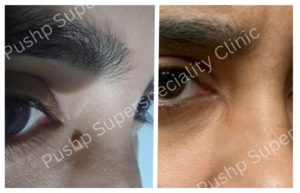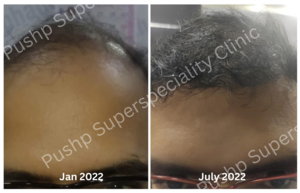
Benign Skin Tumor Removal with Dermato Surgery: Dr. Sandeep Naphade's Experience effective and safe removal of benign skin tumors through Dermato Surgery at the hands of Dr. Sandeep Naphade, a skilled cosmetic surgeon...
Dr. Sandeep Naphade\'s 
Hair Transplant Surgery Results - Dr. Sandeep Naphade Hair Transplant Surgery Results can be truly transformative, but it's important to understand that patience is key. According to Dr. Sandeep Napha...
Dr. Sandeep Naphade 
Scleroderma Scleroderma is an uncommon disease that results in hard, thickened areas of skin and sometimes problems with internal organs and blood vessels. There's no cure, but most people can lead a full, productive life.
NHS 
Warts and verrucas Warts are small lumps that often develop on the skin of the hands and feet. Warts vary in appearance and may develop singly or in clusters. Some are more likely to affect particular areas of the body.
NHS 
Pyoderma gangrenosum Pyoderma gangrenosum is a rare skin condition that causes painful ulcers. It's usually treatable, but may take some time to heal and may leave some scarring.
NHS 
Pityriasis rosea Pityriasis rosea is a relatively common skin condition that causes a temporary skin rash of raised, red scaly patches on the body. The rash can be very itchy and usually clears within 2-12 weeks, but on rare occasions can last up to 5 months.
NHS 
Post-herpetic neuralgia Post-herpetic neuralgia is a persistent nerve pain that occurs at the site of a previous attack of shingles. It's estimated that up to one in every five people with shingles will go on to develop post-herpetic neuralgia, and older people are particularly at risk.
NHS 
Molluscum contagiosum Molluscum contagiosum (MC) is a viral infection that affects the skin. It most commonly affects children, although it can occur at any age. Usually, the only symptom of MC is a number of small, firm, raised papules (spots) that develop on the skin. They are not painful, but can be itchy.
NHS 

